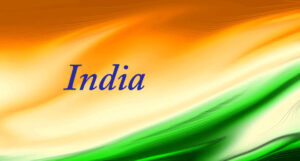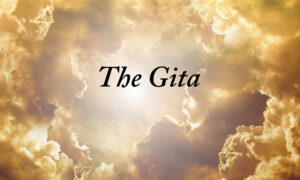The Western world today is sunk deep into scientific materialism and hence it regards only these things as true that can be seen, heard, touched, felt by the material senses. But Indian thought extending way beyond the material, deeper and higher than what the outer senses reveal, saw that the One Divine Reality manifests Itself at many levels, in many ways, through countless forms and names much as Light or the principle of Light manifests itself in different colours, ranges, frequencies and frequencies modified by the medium through which it passes. Yet its fundamental nature does not change. It remains Light which is different from matter as we know it. What we mean by this example is that the existence and reality of Krishna (or Rama and other Divine beings) does not depend upon whether they were physically born or not. Material bodies are born. The Divine uses it for a certain purpose. It neither depends upon the physical body for its truth nor ceases to exist after the body goes through the phenomenon of death. Sri Krishna as the eternal Reality of the Delight of the Divine, as the Godhead of Bliss always existed before Space and Time came into existence. The name Krishna in fact means that which attracts, draws all things to itself. This he is the Anandamaya. So have the mystics known him, in the East and the West. Similarly mystics have experienced and known Krishna much after his physical departure whose names and realisations are undisputed, for example, Chaitanya Mahaprabhu, Meera bai, Sri Ramakrishna, Andals and Alwar mystics of Tamilnadu, Raheem Khankhana of Muslim birth, right upto our own times in the most amazing and divinely wonderful persona of Sri Aurobindo.
So now we come to the question of historical Krishna which, as we have seen, in itself does not change the mystic truth of the bhakti and its effect on the seekers of Sri Krishna and his followers. Having said that the historical Krishna is mentioned in several cross references about Sri Krishna. First of all Veda Vyasa, the author of the Mahabharata as well as the Bhagwat Purana, both of which are the main sources of the life of Sri Krishna, happens to be his contemporary. So we can say that the life of Sri Krishna as described in these two great works are a direct first hand account or primary sources, making it as authentic as it can be. Along with this Sri Krishna is referred to in other works such as Harivansha, Chandogya Upanishad. His example is given refering to him as son of Devaki, student of Sandeepani, initiate of Rishi Ghora, slayer of Kansa and Shishupal, beloved of Radha, friend of Arjuna, Yogayogeshwar who gave the Srimadbhagwat Gita, the Avatar of Dwapar, the king of Dwaraka, including different facets of his life and personality. There are a number of archeological sites associated with various events of Sri Krishna’s life that carry the stamp and evidence of his various exploits. Astrologically too there is reasonably enough corroboration of events such as the Mahabharata and through cross references about the date of Sri Krishna’s birth, his age at the time of the Mahabharata war and his eventually departure from the earth. His life has inspired many plays and films, stories and schools of philosophies, sects and scriptures. Sri Krishna has influenced a number of art forms and dance forms. The Bhagwat Gita is and will continue to inspire generations to come.
So after all this, if one still doubts Sri Krishna’s existence then one would wonder whose existence one can be sure, – Christ, Mohammad, Buddha, lesser mortals like Shakespeare, Socrates, Plato, Moses or whoever else where the so-called evidence or influence (leaving aside political expansion and forced religious conversion) is much less in terms of the various fields of thought and activity. In fact if one would look impartially, one would be easily led to conclude Sri Krishna as the most influential personality in the world across milleniums.
Affectionately,
Alok Da



